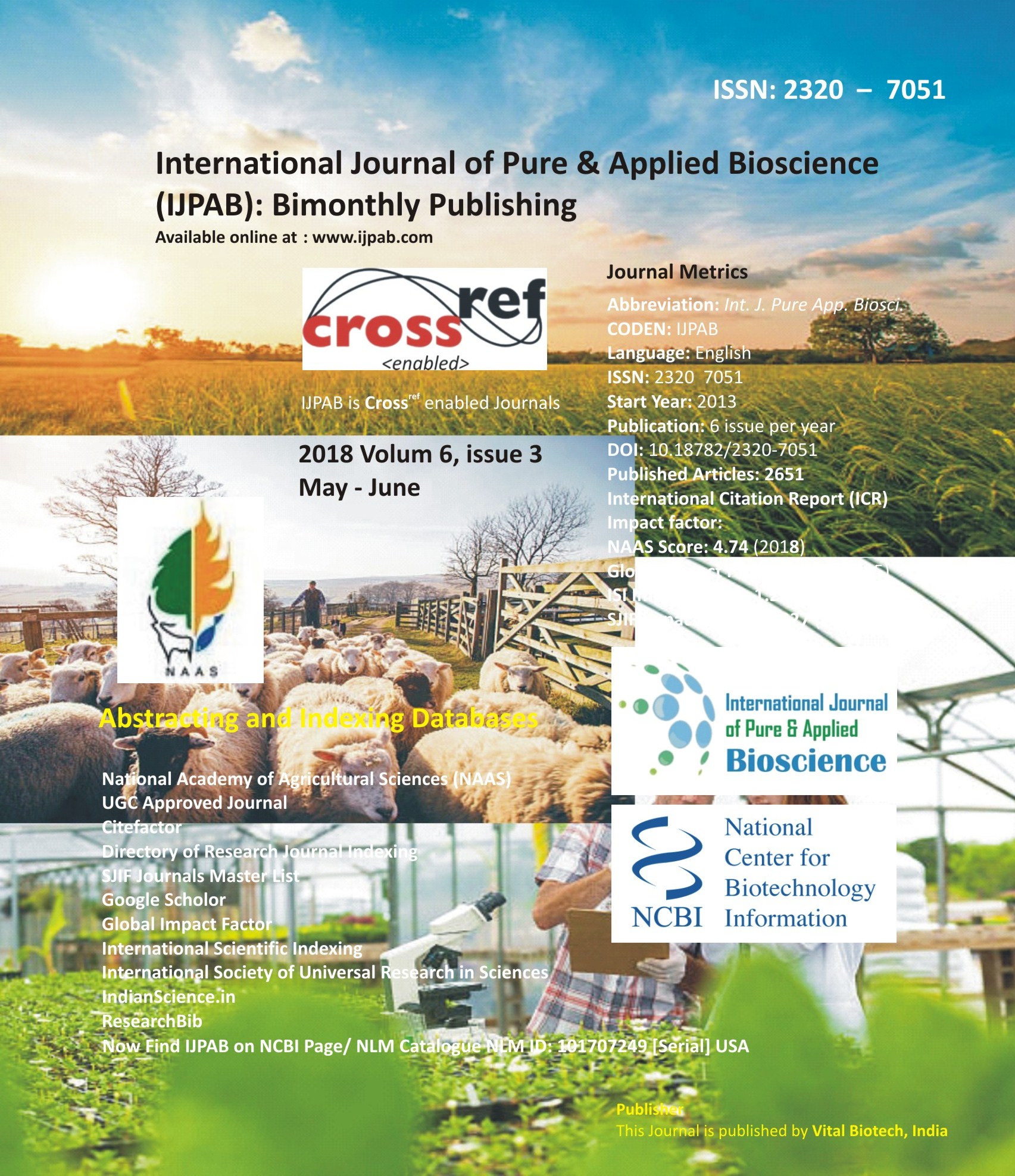
-
No. 772, Basant Vihar, Kota
Rajasthan-324009 India
-
Call Us On
+91 9784677044
-
Mail Us @
editor@ijpab.com
International Journal of Pure & Applied Bioscience (IJPAB)
Year : 2018, Volume : 6, Issue : 3
First page : (616) Last page : (622)
Article doi: : http://dx.doi.org/10.18782/2320-6441
Application of Next Generation Sequencing System in Groundnut Improvement
Preeti Pachauri*, R. S. Shikarvar, Sushma Tiwari, Chitralekha Shyam and Asha Kushwah
Department of Genetics and Plant Breeding, College of Agriculture, Rajmata Vijayaraje Scindia Krishi Vishwa Vidyalaya, Gwalior (Madhya Pradesh)-474 002
*Corresponding Author E-mail: preetishainy786@gmail.com
Received: 27.04.2018 | Revised: 30.05.2018 | Accepted: 8.06.2018
ABSTRACT
Groundnut (Arachis hypogaea L.), is an important oilseed crop worldwide with an allotetraploid genome (AABB, 2n = 4x = 40). Tetraploid nature of cultivated peanut, narrow genetic base of primary gene pool and cultivation of limited genotypes in the process of domestication has resulted in deteriorating genetic resources and low variability for numerous traits. Peanut genome Sequencing has now become a unique choice due to arrival of Next-Generation Sequencing technology platforms. Next-generation sequencing (NGS) is a type of DNA sequencing technology that uses parallel sequencing of multiple small fragments of DNA to determine sequence. NGS technologies give faster sequence data generation and informatics tools to manage and analyze NGS data in a relatively very small time. There is tremendous progress in peanut genome sequencing efforts and its application for improvement i.e., high-quality RAD sequence reads to give out a reference sequence for tetraploid peanuts and diploid peanuts, respectively. Candidate disease resistance genes find by help of sequence information, molecular marker development, tetraploid transcript assembly’s guidance and to find genetic exchange between cultivated peanut’s sub genomes. Next-Generation Sequencing technology help in development of new chloroplast genomic resources for the genus Arachis based on whole chloroplast genomes from seven species that were sequenced. NGS and ddRAD library combination discovered various SNPs in cultivated peanut. The currently available DNA sequencing techniques such as next generation sequencing technique play key role in groundnut improvement for large number of genotype or to find out new genome region by applying high throughput genotyping or SNP discovery.
Key words: Next-generation sequencing (NGS), Genotyping, Groundnut, ddRAD
Full Text : PDF; Journal doi : http://dx.doi.org/10.18782
Cite this article: Pachauri, P., Shikarvar, R.S., Tiwari, S., Shyam, C., and Kushwah, A., Application of Next Generation Sequencing System in Groundnut Improvement, Int. J. Pure App. Biosci.6(3): 616-622 (2018). doi: http://dx.doi.org/10.18782/2320-7051.6441

